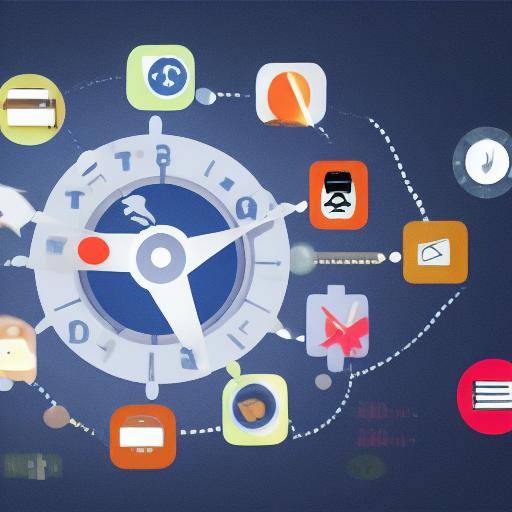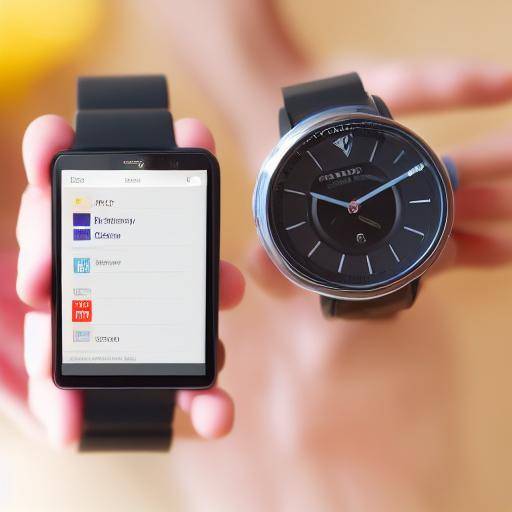
Introduction
In the contemporary digital era, screen time has become an integral part of our lives. Whether in the labour or personal sphere, the use of electronic devices and exposure to their content have increased significantly in recent decades. This phenomenon has led to growing interest in digital well-being and effective time management to maintain productivity. In this article, we will explore the importance of managing screen time, address the concept of digital well-being and offer practical strategies to achieve a healthy balance in the use of technology.
History and Background
The phenomenon of screen time has its roots in the development and widespread adoption of digital technology in modern society. From the arrival of the first personal computers to the explosion of mobile devices and social networks, the screen time has experienced exponential growth.
The concept of digital well-being emerges as a response to the challenges and risks associated with excessive use of technology, including visual fatigue, addiction to social networks and declining productivity. Effective time management thus becomes an essential element to counter these negative impacts and maximize the productive use of technology.
Analysis in Deep
Digital well-being not only involves limiting screen time, but also fostering a conscious and healthy use of technology. Awareness of time spent on screens and the adoption of practices to reduce excessive exposure have become fundamental aspects of digital well-being.
Time management, on the other hand, focuses on optimizing productivity by effectively controlling the time spent on digital tasks, minimizing distractions and prioritizing significant activities.
The balance between screen time, digital well-being and time management is crucial to maintaining a healthy and productive lifestyle in the current digital age.
Comprehensive review
The practical applications of digital welfare and time management strategies are diverse and affect multiple aspects of everyday life, from the working environment to the personal sphere. The implementation of technological tools to monitor and limit screen time, as well as the establishment of healthy habits of using technology, are concrete examples of how these strategies can be effective in improving quality of life and productivity.
Efficient screen time management not only contributes to a healthier working environment, but also promotes a positive balance between digital life and offline life. The adoption of digital welfare and time management practices can have a significant impact on mental and emotional health, promoting greater concentration, creativity and overall well-being.
Comparative analysis
While display time, digital well-being and time management have different objectives, they complement each other to promote a balanced and conscious use of technology. While the screen time focuses on the amount of time spent on electronic devices, digital well-being encompasses broader aspects of health and emotional well-being, while time management focuses on optimizing productivity and performance.
By comparing these areas, there is a need to consider integrated strategies that address both the quantification of screen time and the emotional and cognitive impact of the use of technology, while prioritizing the efficiency and organization of time.
Practical Tips and Accessible Guidance
To effectively manage screen time, consider following these tips:
- Set time limits for the use of electronic devices.
- Prioritize offline activities that promote physical and mental well-being.
- Use parental control tools to monitor the time children spend in front of the screens.
- Schedule rest periods without electronic devices during the day.
To promote digital well-being in your daily life, you can consider the following recommendations:
- Set specific schedules to review email and social networks.
- Practice digital disconnect at certain times of the day, such as during meals or before bedtime.
- Encourage face-to-face communication and social activities outside the screen.
- Set clear limits for the use of electronic devices at work and at home.
To optimize time management and improve productivity, we recommend:
- Use time management techniques, such as Pomodoro technique, to divide the work into focused intervals and rest periods.
- Prioritize the most important and urgent tasks to maximize efficiency.
- Delegate tasks whenever possible and set clear and realistic goals.
- Avoid multitasking and focus on one task at a time to improve the quality of work.
Ideas and Industry Reviews
Experts on digital well-being and time management have highlighted the importance of promoting a healthy balance between screen time and off-tech activities. According to their views, the adoption of practical strategies, the awareness of the time devoted to screens and the implementation of digital pauses are critical to ensuring a healthy and sustainable use of technology in everyday life.
Current technological advances are providing new opportunities to integrate digital welfare and time management tools into everyday life, which opens the way to a more proactive and personalized approach to addressing these challenges.
Case Studies and Practical Applications
Multiple companies and organizations have implemented digital welfare programs and time management strategies to improve the health and performance of their employees. The results of these efforts have shown positive impacts on the productivity, labour commitment and overall health of workers.
In educational settings, the implementation of time management policies and awareness-raising programs has led to a significant improvement in students' academic performance and emotional well-being.
Future Trends and Predictions
As technology continues to evolve, new solutions and innovative approaches are expected to emerge to address screen time, digital well-being and time management. The integration of artificial intelligence and advanced analytical tools will allow greater customization and adaptation to individual needs, which will transform the way we face these challenges in the future.
It is anticipated that digital well-being and time management will become even more important in digital society, promoting a culture of conscious use of technology and a healthy balance between digital and offline life.
Conclusion
In short, the effective management of screen time is critical to maintaining productivity and well-being in the digital era. The adoption of digital welfare and time management strategies can provide significant benefits for mental health, labour productivity and quality of life in general. Maintaining a healthy balance between screen time, digital well-being and time management is essential to flourish in a constantly changing digital environment.
Frequently asked questions
What is the recommended amount of daily screen time?
The amount of recommended screen time may vary according to age and individual needs, but it is usually suggested to limit screen time to two hours or less a day for adults and at one hour or less for children.
What impact does excessive screen time have on mental health and emotional well-being?
Excessive screen time has been associated with a variety of mental health problems, including anxiety, depression and sleeplessness. In addition, it can negatively affect visual health and cause a sedentary lifestyle.
How can I reduce my children's screen time?
To reduce children's screen time, it is important to set clear limits and encourage activities outside the screen, such as outdoor games, reading and family time. Parental control applications and tools can also be used to limit access to electronic devices.
What is the role of time management in digital well-being?
Time management plays a crucial role in digital well-being by allowing a conscious and balanced use of technology. By setting priorities, limiting distractions and spending time on offline activities, greater emotional well-being and greater productivity are promoted.
How can I foster digital well-being in my working environment?
To promote digital well-being in the working environment, policies that promote the conscious use of technology can be implemented, as well as training on the importance of the balance between digital and offline work. Fostering active breaks and setting clear limits for screen time can also contribute to digital well-being at work.
Is there a relationship between screen time and labor productivity?
Excessive screen time can negatively affect labor productivity by increasing distractions, reducing concentration capacity and contributing to visual fatigue. Therefore, limiting screen time and adopting time management strategies can significantly improve productivity in the working environment.
How can I find a balance between screen time and emotional well-being?
Finding a healthy balance between screen time and emotional well-being means setting clear limits for the use of electronic devices, spending time on offline activities that promote emotional well-being and practice digital disconnection at certain times of the day.
What are future trends in time management and digital well-being?
Future trends in time management and digital well-being are expected to include the development of more advanced technological tools to monitor and limit screen time, as well as more personalized approaches to addressing individual challenges in the use of technology. In addition, there is an increase in the integration of digital welfare strategies in the working and educational environment.
Conclusion
The article provides a comprehensive view of screen time, digital well-being and time management, providing detailed and practical information to promote a conscious and balanced use of technology. By addressing frequent questions and providing practical guidance, the reader gains a solid understanding of how to manage screen time to maintain productivity and well-being in the digital age.






















































